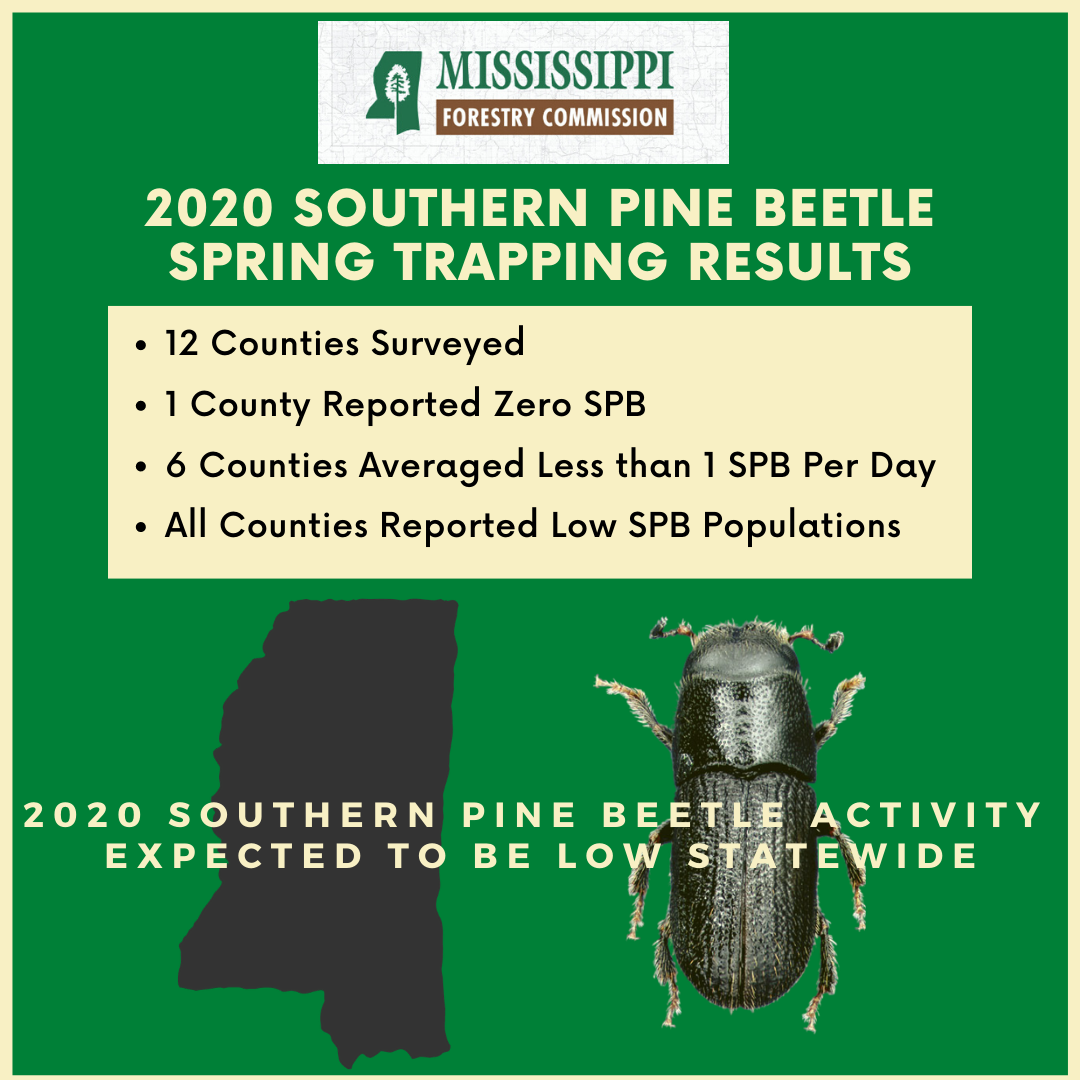Mississippi experiences decline in southern pine beetle numbers
According to a recent study, Mississippi’s southern pine beetle (SPB) population appears to be declining.

The southern pine beetle is the most destructive forest insect in the South. Part of our mission is protecting Mississippi’s forests and trees from harm caused by this devastating insect.
Russell Bozeman, Mississippi Forestry Commission (MFC) state forester
An SPB outbreak can spell disaster for a stand of pine trees. In fact, its scientific name, Dendroctonus frontalis, means “tree killer.” Many landowners across Mississippi and throughout the southeastern United States have experienced loss, ranging from a few trees to an entire stand, due to SPB infestation.
2020 Southern Pine Beetle Survey
The MFC conducted its 2020 Southern Pine Beetle Spring Survey during March and April. Based on historical data, 12 counties were chosen for the survey. Three beetle traps were placed in each county and monitored during the six-week period.
“This most recent survey shows that southern pine beetle numbers have declined since our last survey,” Bozeman said. “This is good news for the state’s pine tree population, and we expect activity to remain low the rest of the year.”
Of the 12 counties surveyed, six counties averaged less the one beetle per trap. One county reported no SPB population. The state, as a whole, averaged less than two beetles per trap per day. Copiah County had the highest capture rate of the counties surveyed, but that was driven by one trap that averaged 20 beetles per day, which is still low.
“We’ve gained valuable data about Mississippi’s southern pine beetle population,” said Bozeman. “Outbreaks near the Homochitto and Bienville National Forests appear to be ending and the capture rates this year were much lower than 2012-2018.”
Recognizing an Infestation or Outbreak
Despite the decline, the SPB is still in Mississippi. Landowners should be aware of what an infestation and outbreak look like.
Weakening of trees by flooding, high winds or drought are common precursors to SPB infestations and outbreaks.
The first sign of attack is usually yellowing or browning of needles. The trunk will usually reveal white, yellow or sometimes red-brown pitch tubes, about as large as a wad of gum. During a drought, pitch tubes may be very small or absent. Removal of the bark will show a distinctive winding “S” shaped gallery pattern.
Controlling SPB Populations
Natural enemies, such as diseases, parasites, predators and weather, help maintain SPB populations at low levels and bring cyclic outbreaks under control.
Landowners can achieve pest management through one or all the following suppression techniques:
- Rapid salvage and use of infested trees
- Chemical control in high-value resources
- Cut-and-leave (May through October)
“There are several ways landowners can prevent or mitigate damage. Yet, good forest management is the most effective method of prevention,” Bozeman said. “The MFC offers forest management advice and a prevention program for landowners.”
If you suspect you have an infestation on your property, contact your local MFC forester.
Click here for more information about the southern pine beetle.
Click here for information about the Southern Pine Beetle Prevention Program.
